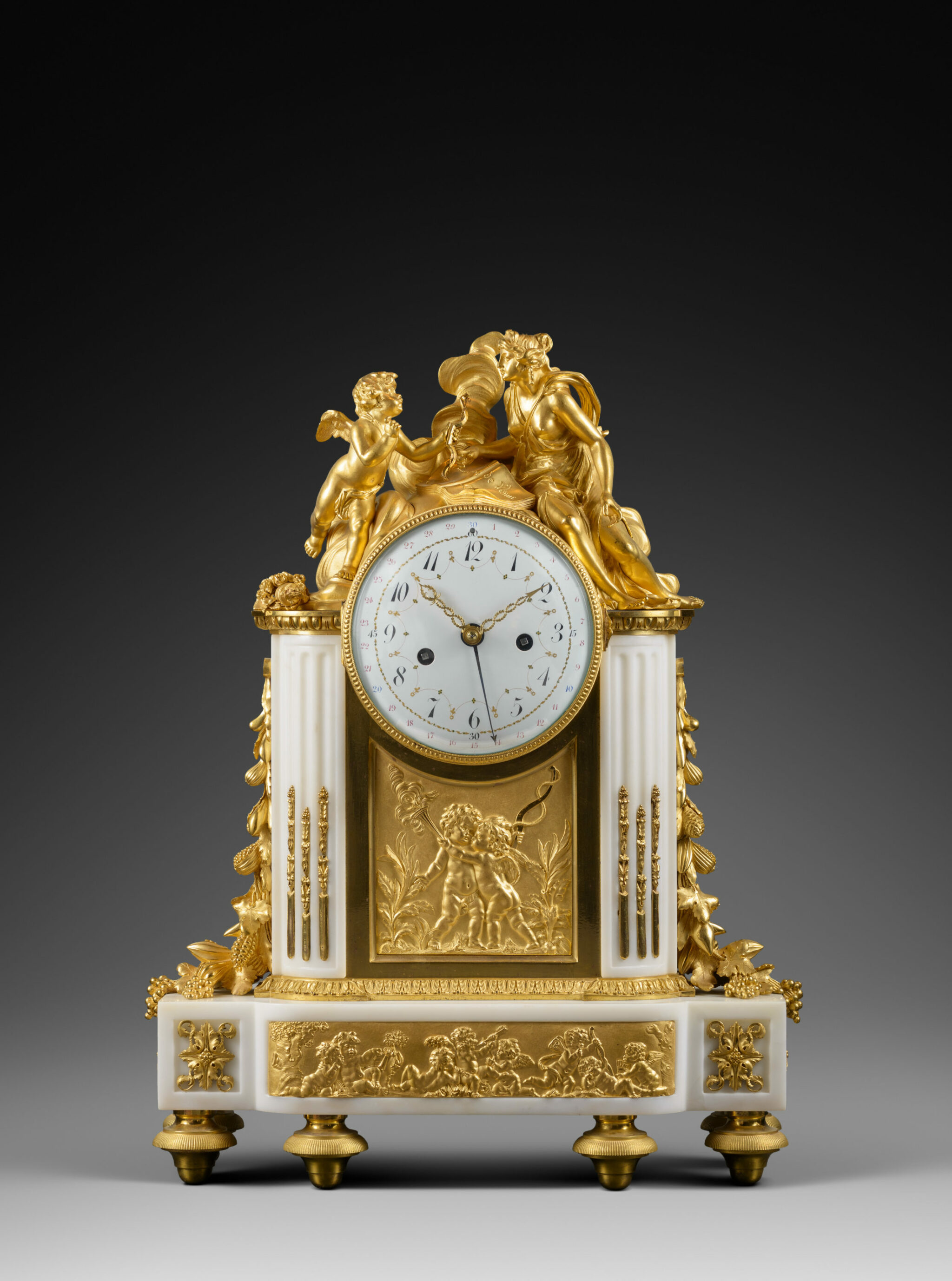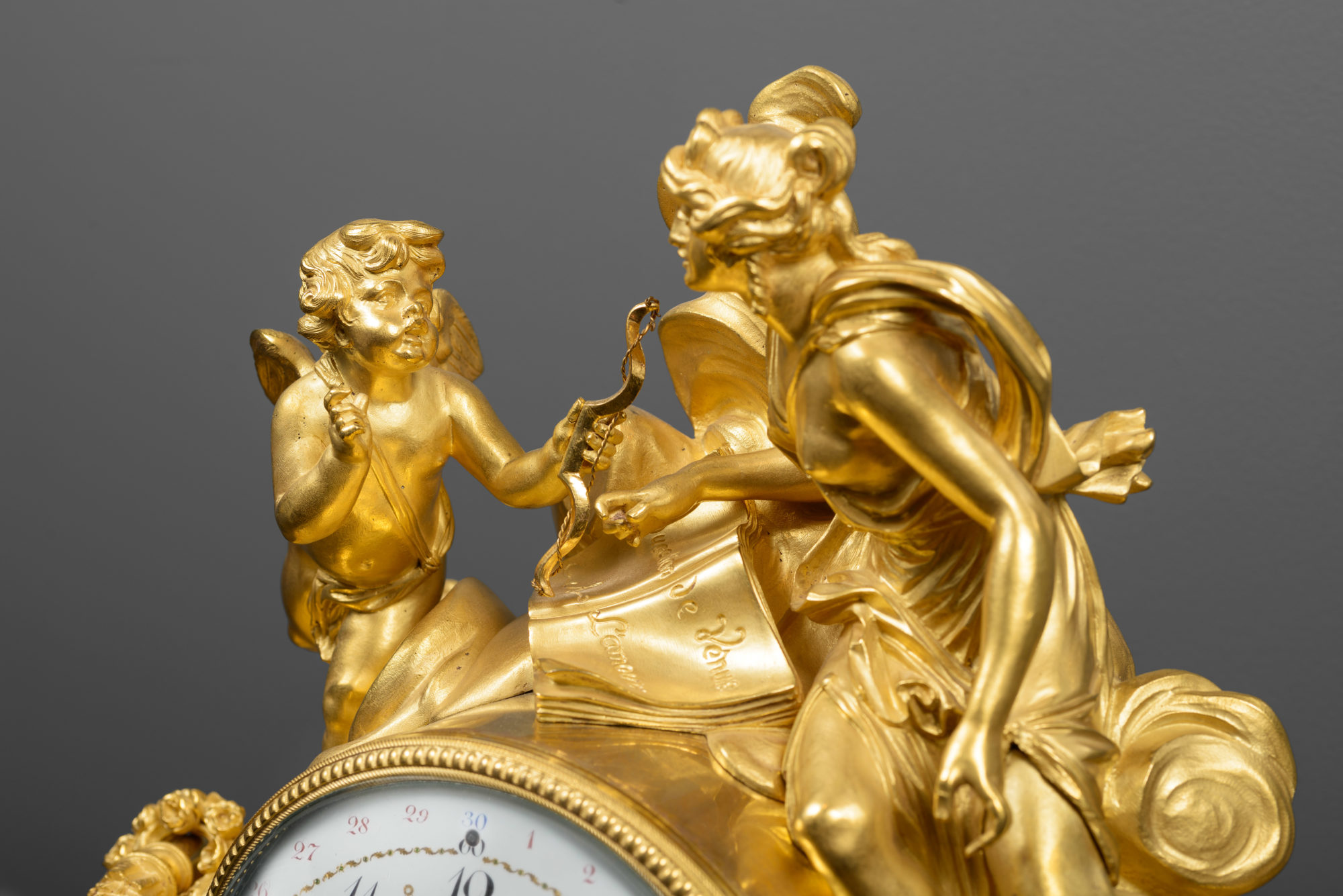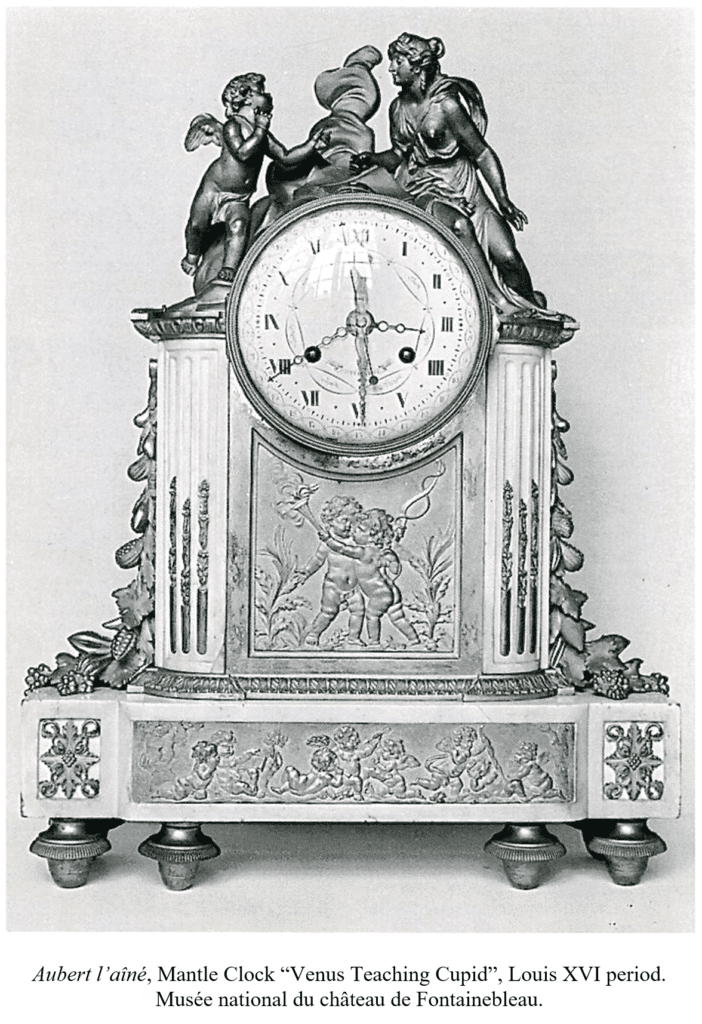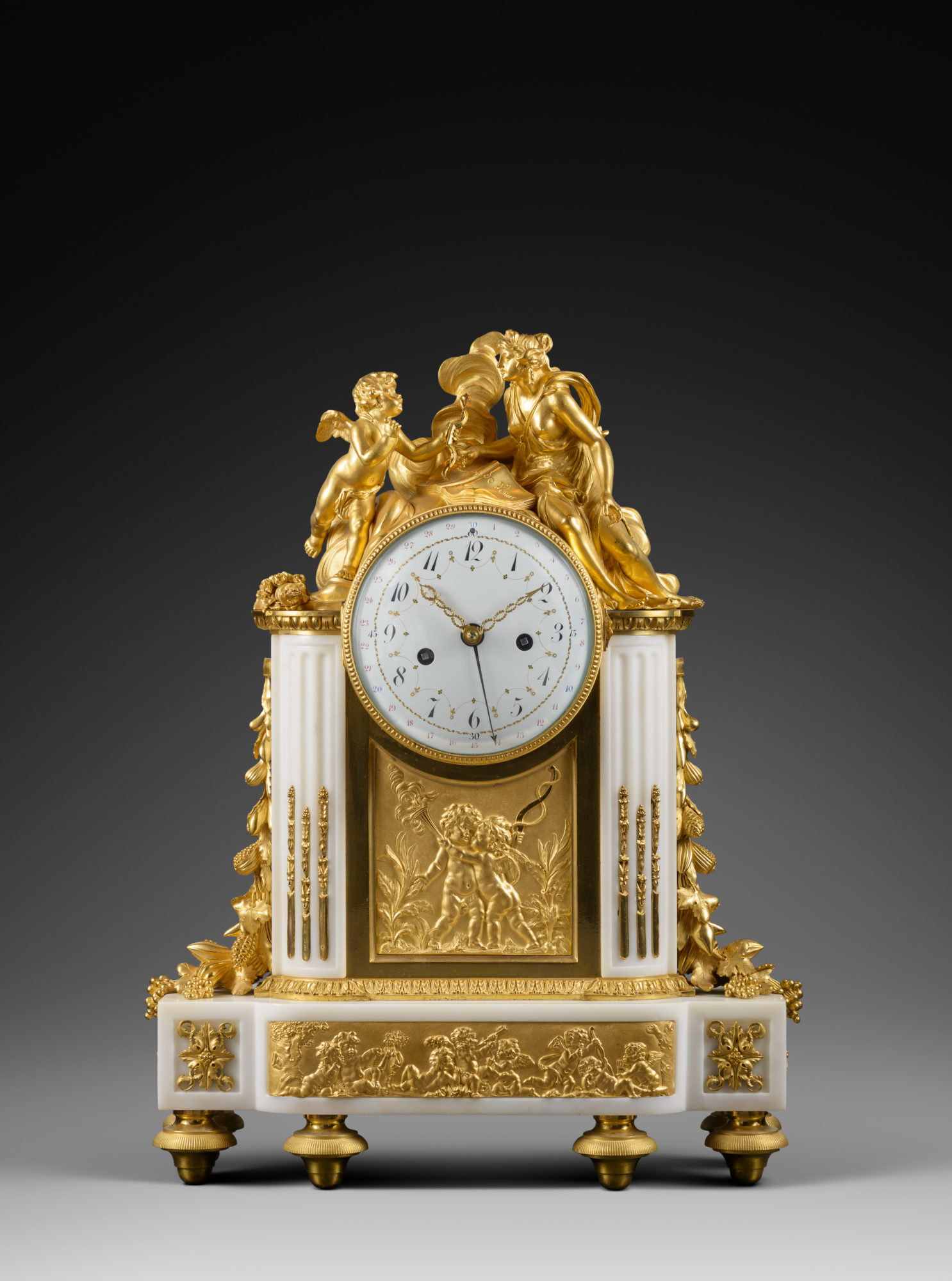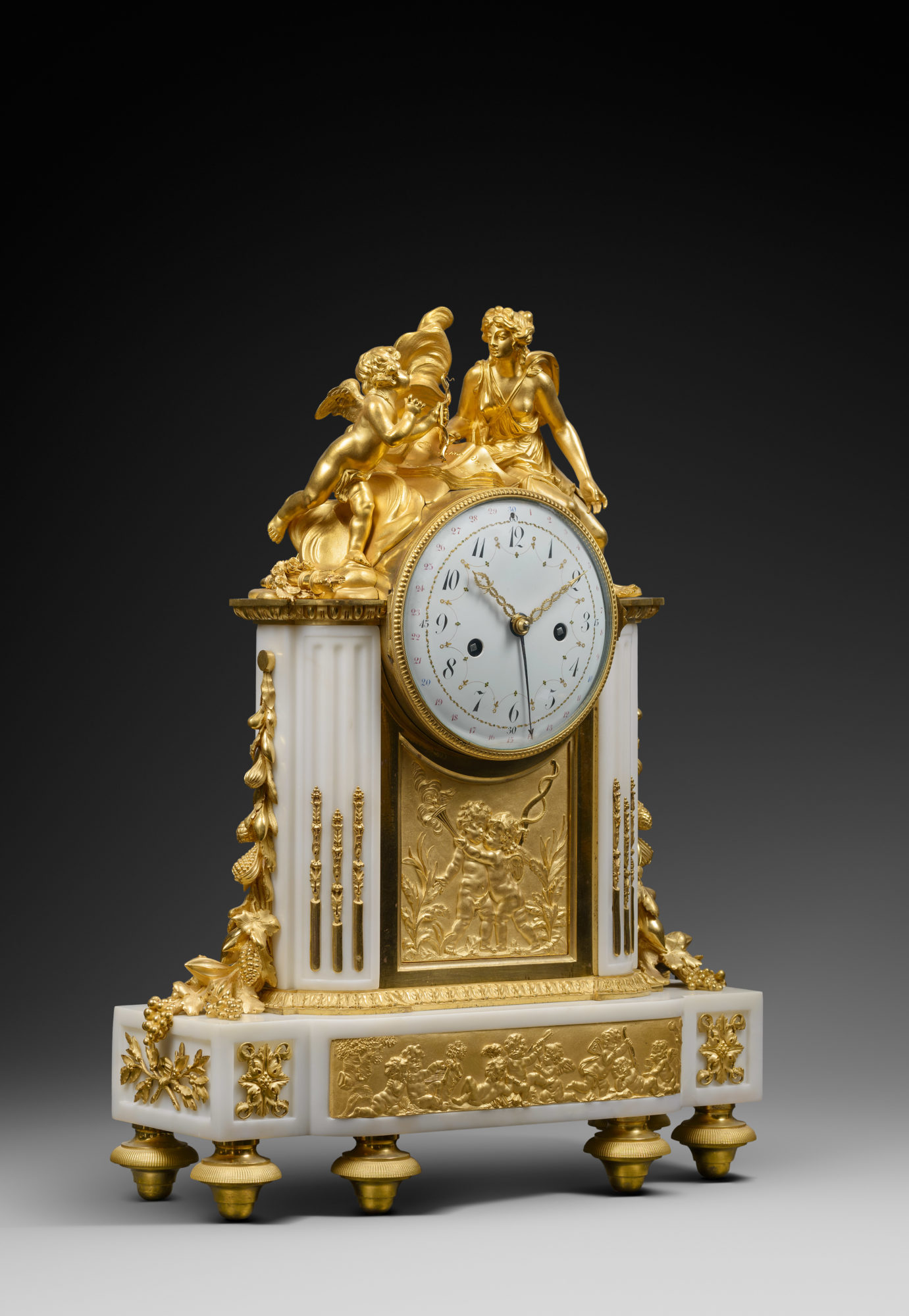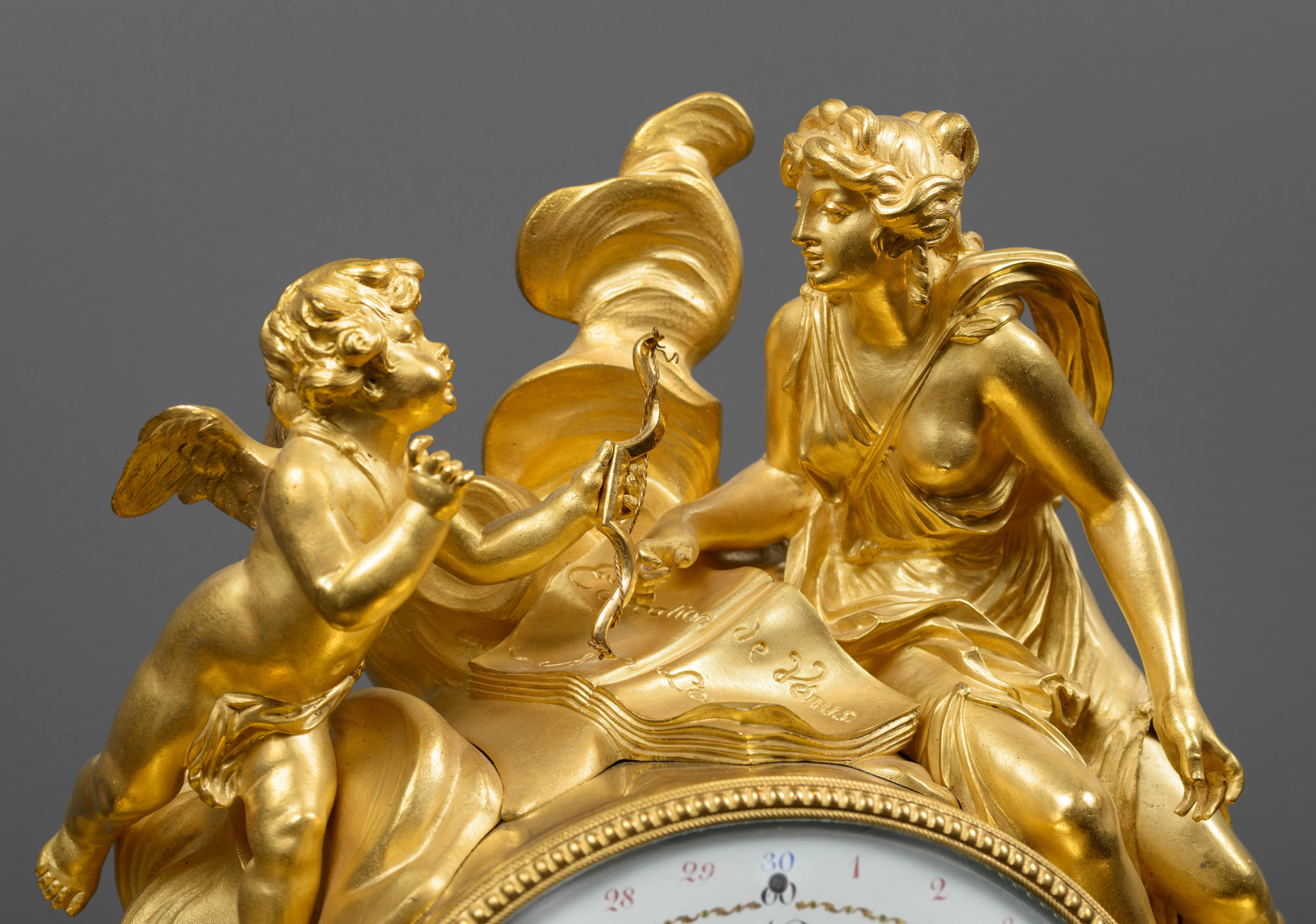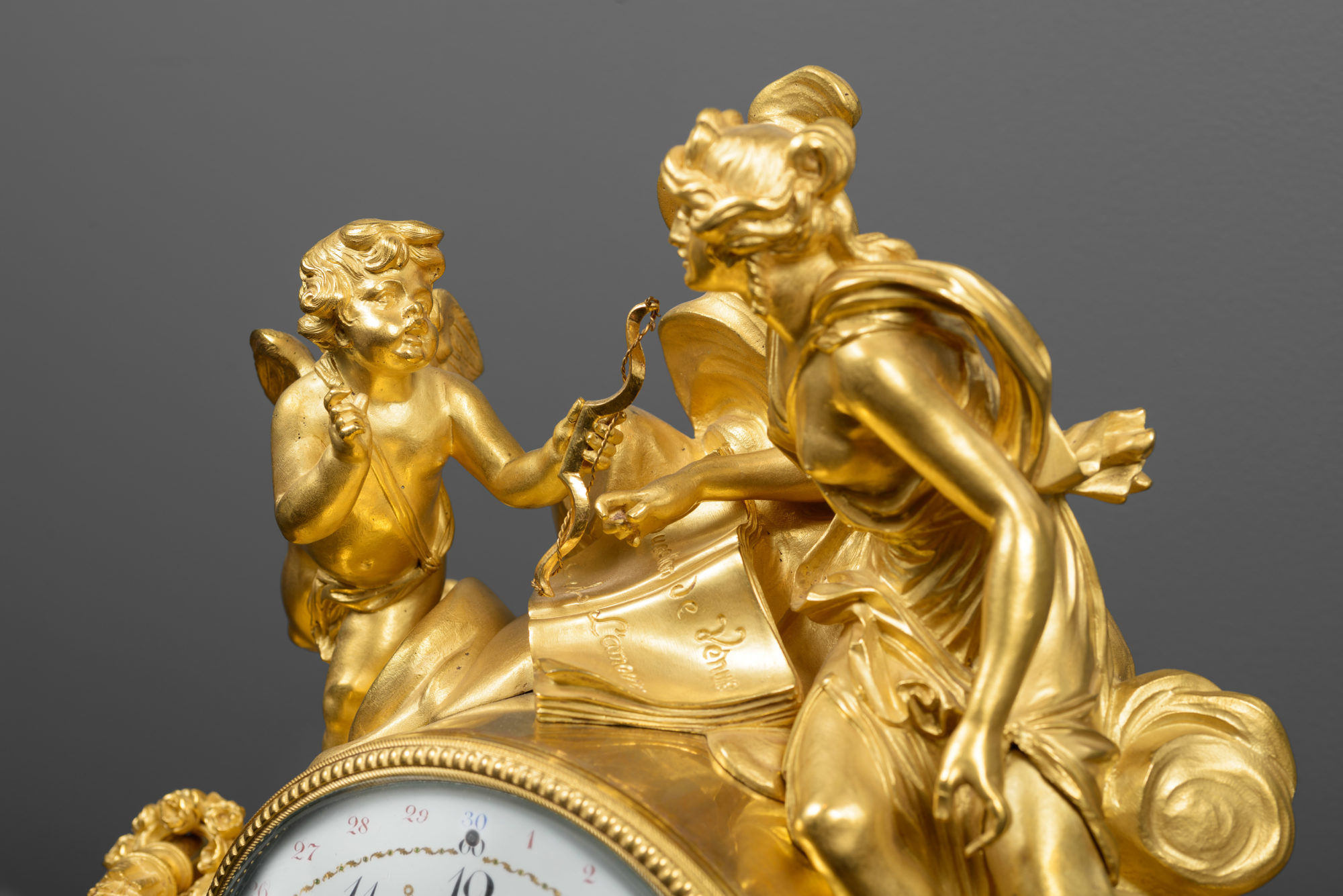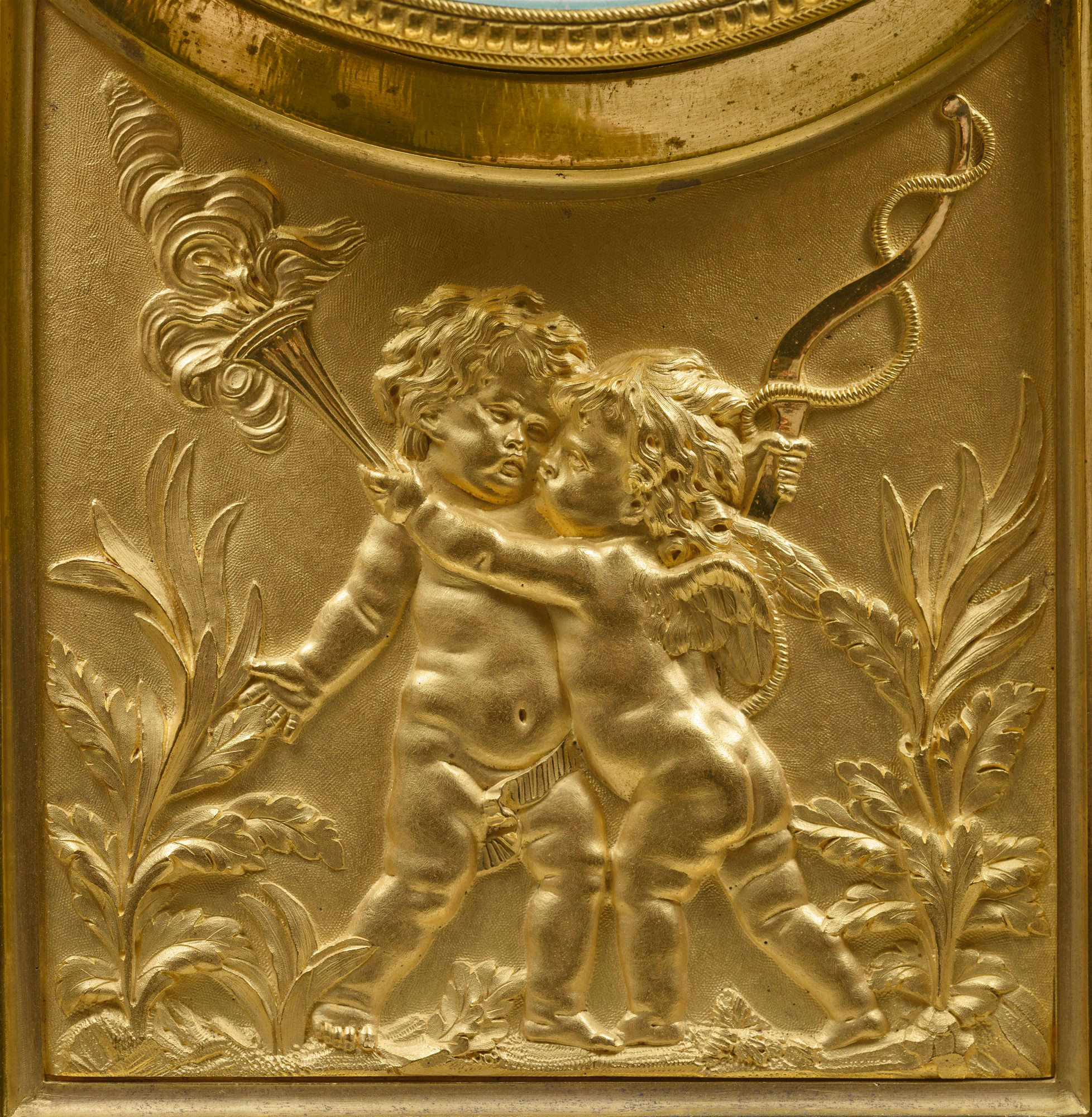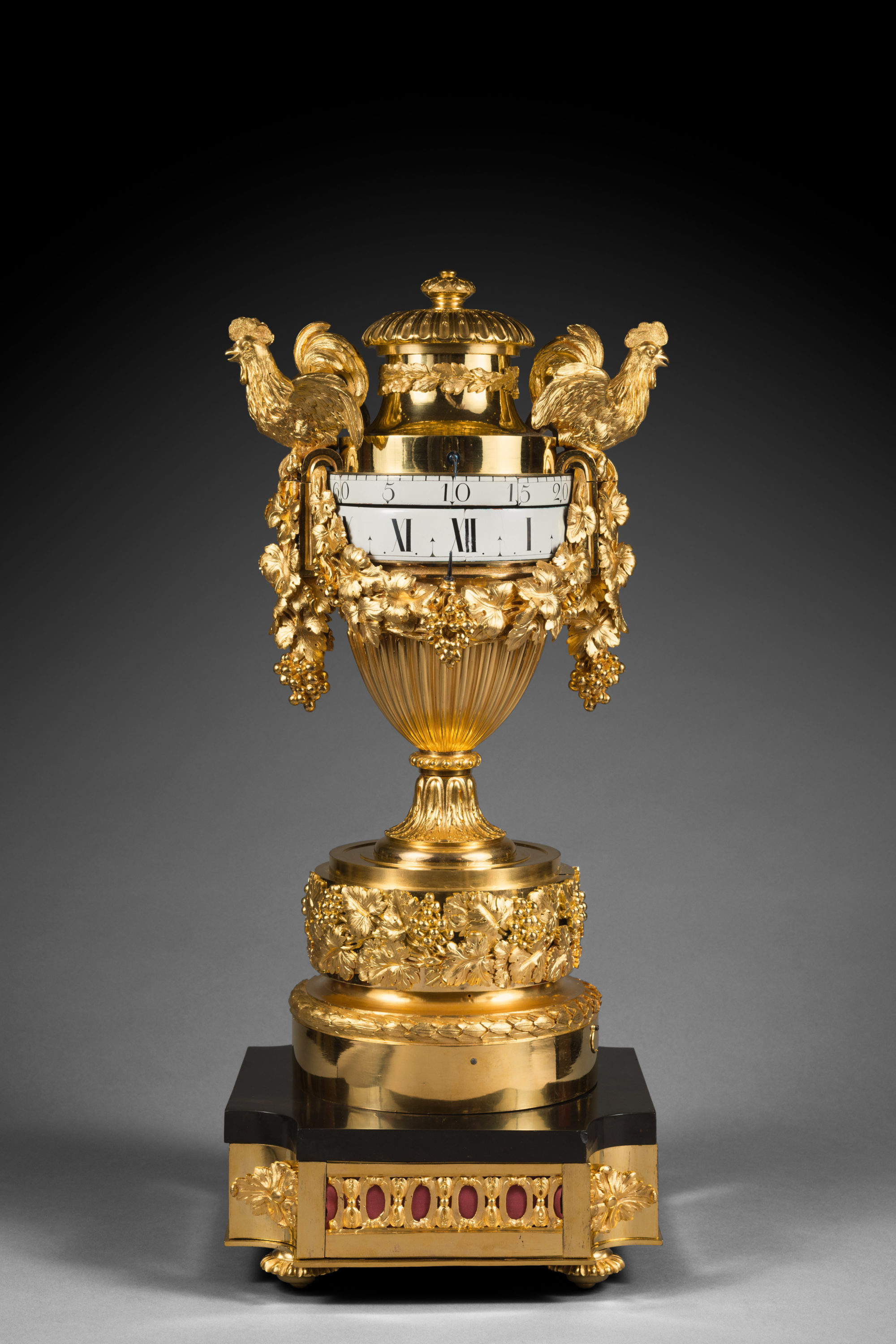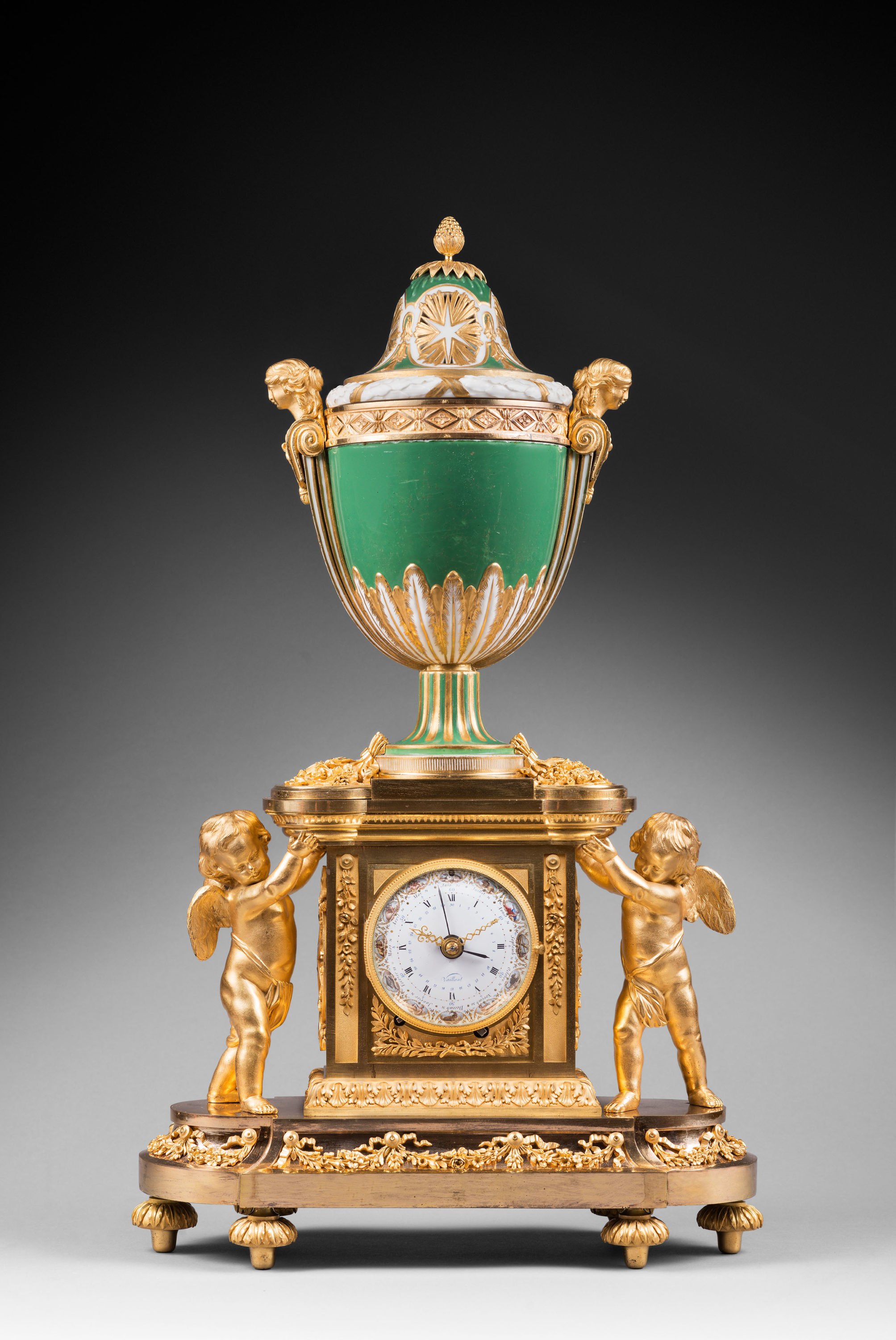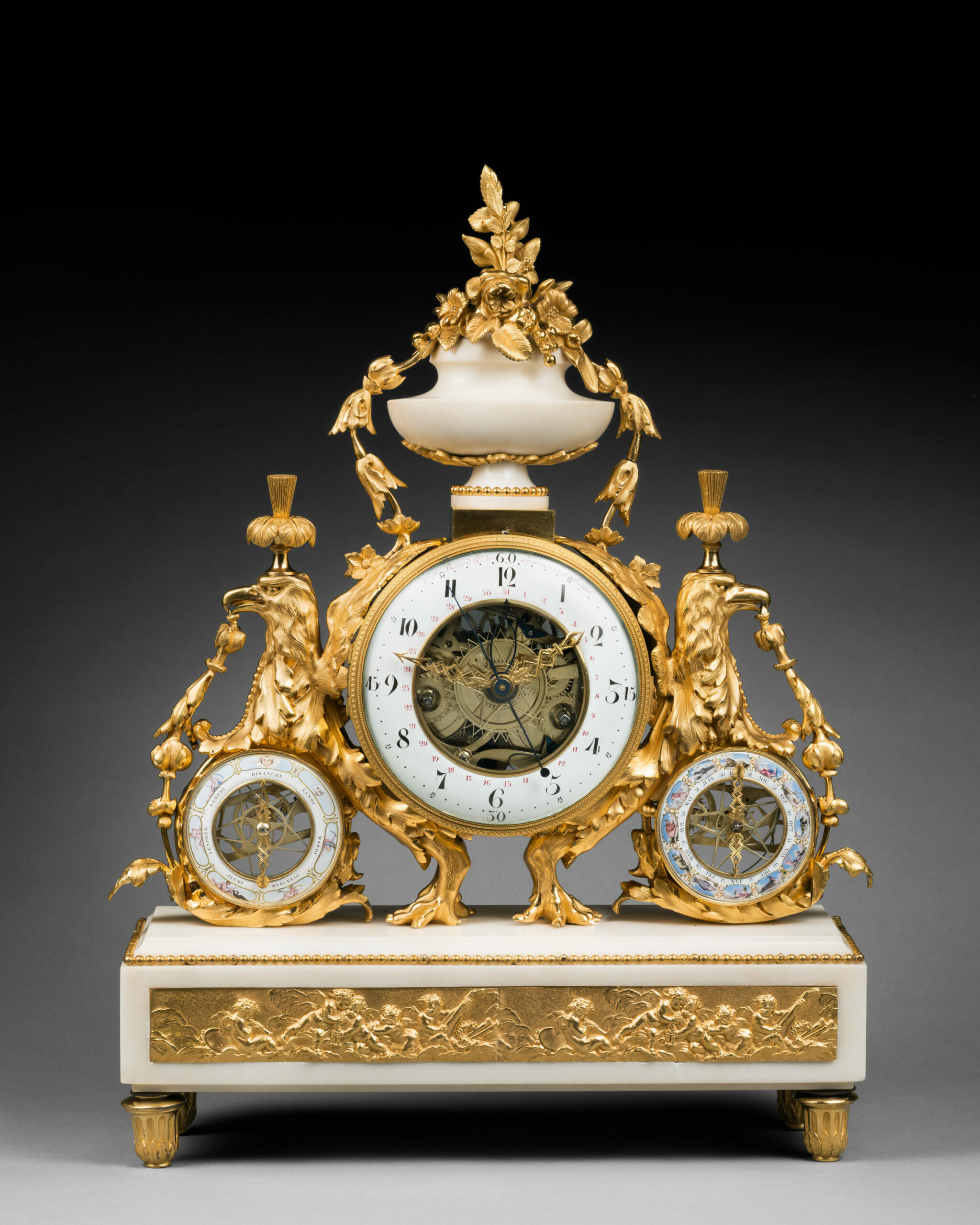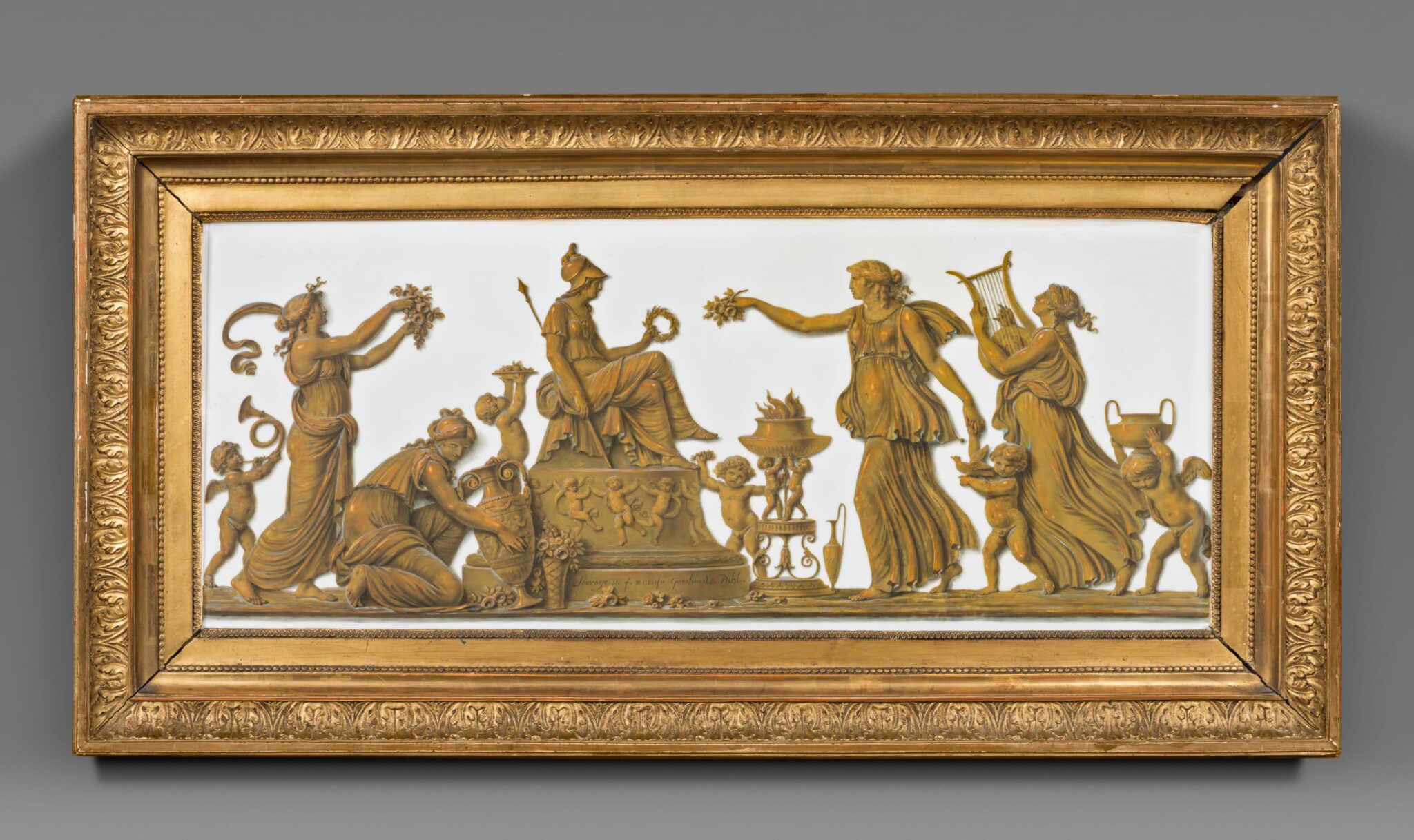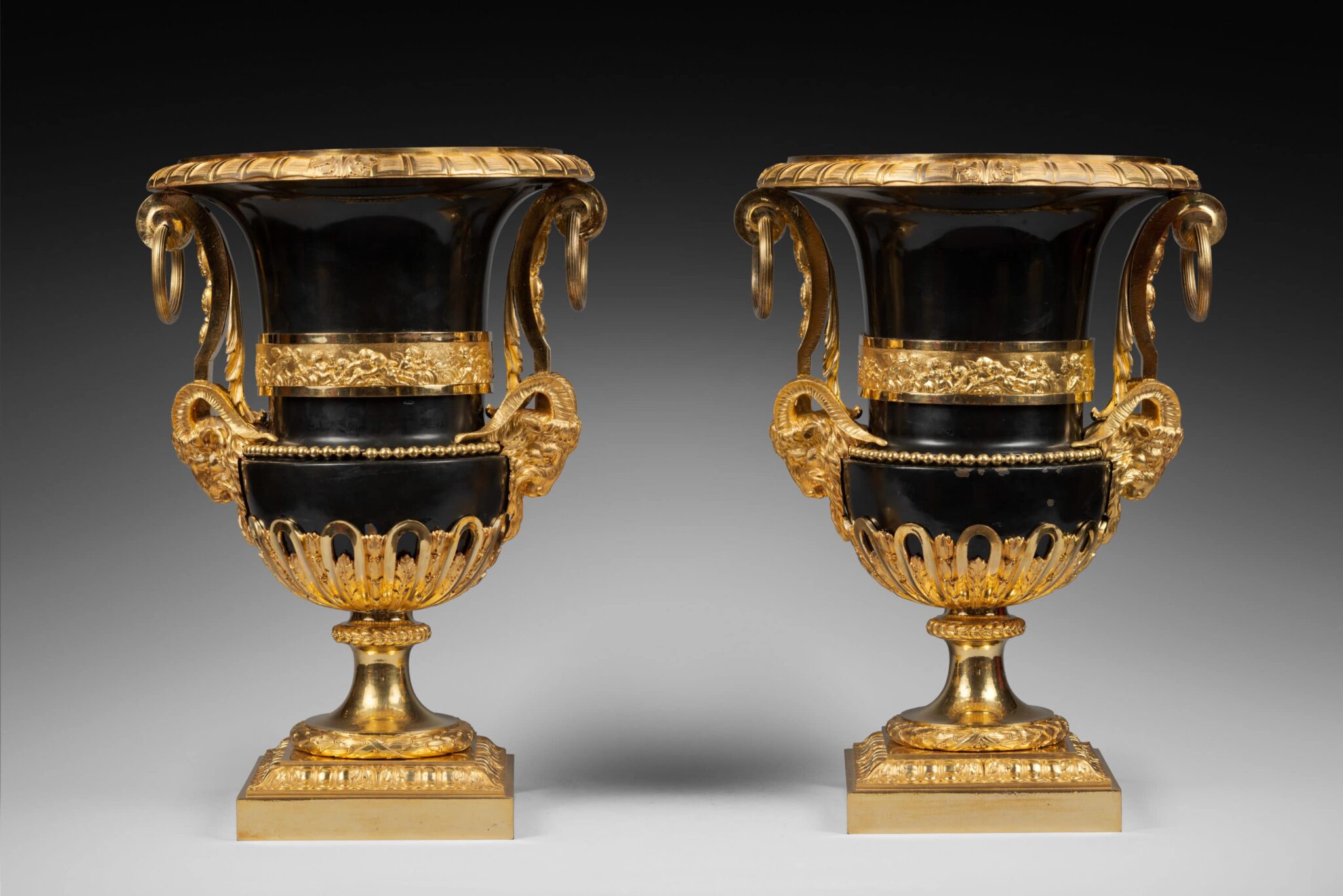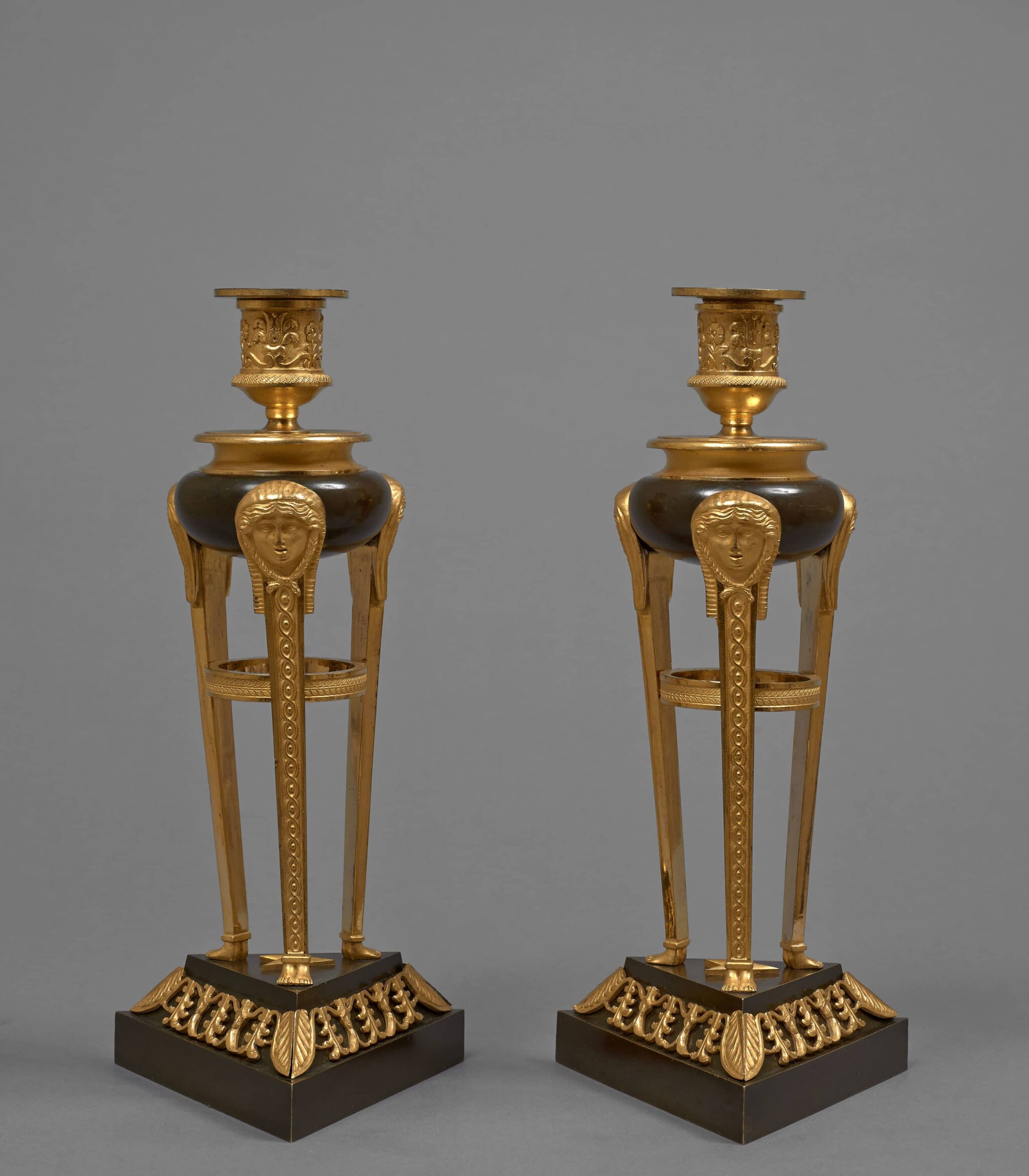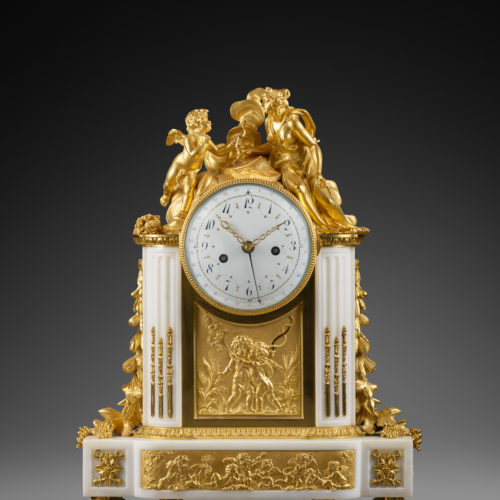Rare Allegorical Clock “Venus Teaching Cupid”
This clock’s architectural design and allegorical sculptural group testifies to the level of excellence attained by Parisian clockmakers and bronziers by the mid 18th century. It indicates the hours, minutes and the date, and is set within a white statuary marble borne flanked by two fluted half-columns adorned with sprigs of leaves and fruits, with inlaid chased ormolu motifs centred by a low relief plaque depicting two embracing putti, one holding a bow and the other a flaming torch. The frieze on the white marble base depicts a landscape in which putti engage in various activities, flanked by ormolu quatrefoil mounts. At the clock’s summit, there is a sculptural group representing a young drapery-clad woman and a winged child holding a bow, sitting in the clouds. This is the allegory of Venus Teaching Cupid; the lesson is engraved in the open book that lies between them. The base rests on six chased toupie feet.
Discover our entire collection of antique mantel clocks for sale online or at the gallery.
This remarkably well-executed clock is of a type that was very rare during the 18th century. Among the identical examples, one notes: a clock from the bequest of Baron Basile de Schlichting and bearing the signature of the enameller Dubuisson, today in the Louvre Museum in Paris (illustrated in D. Alcouffe, A. Dion-Tenenbaum and G. Mabille, Les bronzes d’ameublement du Louvre, Dijon, 2004, p. 204, catalogue n° 103); a second, taken from the Paris home of General Moreau in 1804, bearing the signature of the clockmaker Aubert l’aîné, today in the Musée National du Château de Fontainebleau (illustrated in J-P. Samoyault, Musée national du château de Fontainebleau, Pendules et bronzes d’ameublement entrés sous le Premier Empire, RMN, Paris, 1989, p. 48, catalogue n° 3).
